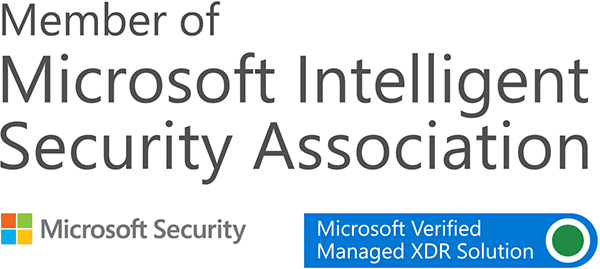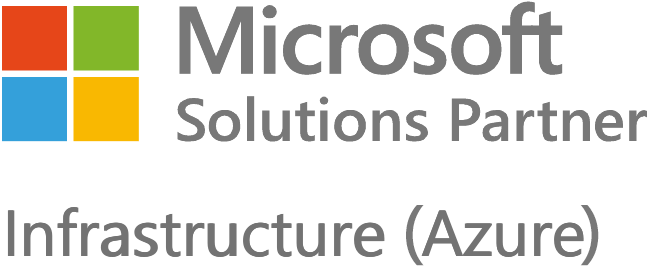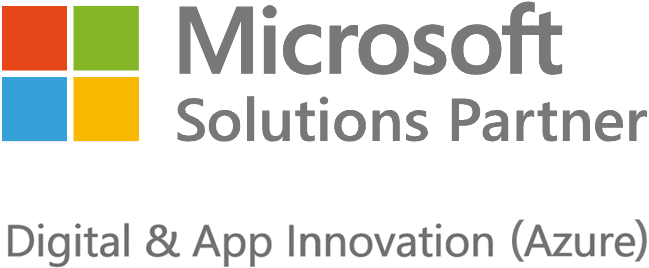Identity is the new frontier of cyber security. We explore how partnering with an identity-centric managed security service partner (MSSP) enables robust protection for users and resources in hybrid working, multi-cloud environments.
We know, from working in partnership with our clients, that secure identity and access management (IAM) is a foundational part of modern security requirements.
This is hardly a surprise when we consider the changes arising from remote work, cloud computing, and the proliferation of personal devices.
Now, it’s a change that’s delivered new advantages around things like productivity, efficiency, work-life balance, and staff satisfaction. But it’s also created new challenges and a fundamental shift in our approach to cyber security.
As the lines have been blurred between internal and external environments so the focus has shifted to the user rather than the network.
And put identity protection and access security at the heart of modern security operations.
Let’s explore this a little deeper.
Why we place identity at the heart of security operations
Employees are now the primary access points to organisational systems and data. This puts a big target on their backs.
It makes them vulnerable to the attentions of cyber criminals seeking to breach their identities through tactics like phishing attacks, email compromise, and social engineering.
There were 4,000 password attacks per second and 156,000 business email compromise incidents per day, in 2023
And then there’s the added risk posed by insider threats, regardless of whether malicious or mistake.
But there’s a challenge.
Identity-centric security can’t afford to ignore the user experience
While identity security is paramount, a true identity-centric strategy needs to be mindful of the user experience.
For instance, overly complex security measures and access controls can often lead to frustration and annoyance.
And that’s a recipe for disaster.
If your processes create friction and hinder workers’ ability to do their job productively, then it increases the likelihood they’ll look for workarounds. Which undermines effectiveness and weakens your security posture.


Free Video
Microsoft Sentinel and Defender XDR Demos
Detect, investigate, and remediate threats across your entire network, with the power of AI.
See how you can:
- Make security and protection more efficient
- Utilise AI to power detection and remediation
- Protect endpoints, identities, and apps
What you should expect from an identity-focused MSSP
If we recognise that users and identities need to be at the core of modern organisational security, then it’s imperative that your MSSP of choice understands the practicalities of identity and access management.
Secure modern IAM is all about ensuring users have unhindered access to the resources they need, wherever and whenever it’s required. Your MSSP therefore, needs to be mindful that security controls should offer the protection needed, without it becoming a barrier to operations.
A genuine partner who understands the business and recognises that every environment is different. From the culture, the workloads, the people, and the potential risks.
But, of course, they also need to bring the skills, experience, technology, and service to enable the protection of every user and digital asset.
Such as:
Leveraging advanced technology and closing the skills gap
If you’re serious about balancing security with usability then you need to have the right solutions for the job. And that’s not always an easy thing to attain within an organisation.
Staying at the sharp end of technology innovations is paramount to any managed SOC team worth their salt. Where resources, skills gaps, and the general pace of change can make it hard for organisations to stay ahead of security challenges, your MSSP gives you exposure to cutting-edge tools. Not to mention skilled analysts who know how best to deploy them.
It’s a way for organisations to take advantage of the MSSP’s economy of scale to leverage tools and integrations that may otherwise be cost-prohibitive.
For instance, in a Microsoft environment, this could mean integrating Entra ID Protection with Microsoft Sentinel. This provides a robust framework for monitoring and detecting identity-based threats (see below for more details).
Understanding that identity is part of the bigger picture
Identity might be the foundation stone for your security posture, but modern estates have an increasingly wide attack surface. And this requires full visibility and a platform to see and react to threats, wherever and however they emerge.
For instance, tools like Microsoft Defender XDR offers comprehensive visibility into user activity across endpoints, identities, and applications.
Defender for Identity, a key component of this ecosystem, provides granular visibility into user and entity behaviour, enabling the detection of suspicious actions and potential compromises.
And, as it works in alignment with Defender for Endpoint and Office 365 it facilitates rapid investigation and response to multi-stage attacks.
Scalability and flexibility
We know that cyber security is a constantly changing beast. Therefore, organisations need a security partner that can adapt to changing threats and business requirements.
Identity-focused MSSPs offer the scalability and flexibility to meet evolving needs, whether it’s handling increased user volumes, expanding geographic footprints, or adopting new technologies.
Accelerated incident response
In the event of a security incident, time is of the essence. Identity-focused MSSPs have the tools, processes, and expertise to rapidly investigate, contain, and remediate incidents. Their ability to correlate identity data with other security information provides valuable insights into the attack’s origin and scope, enabling faster and more effective response actions.
Securing employees and the organisation from day one
Any successful partnership between an organisation and an MSSP needs to be built on solid foundations.
And that stems from having a slick, robust onboarding process that prioritises protection of digital assets from the outset. Even as the broader security ecosystem is being established.
Now, if we accept that identity is the modern perimeter, then it follows that establishing strong identity protection is essential from day one of the partnership.
So, how do we achieve this?
Rapid identity security implementation
MSSPs must possess the capability to swiftly onboard new clients by prioritising identity security as a foundational element.
Let’s take, for example, an organisation using Microsoft technologies. To achieve rapid identity security implementation require swift integration of Microsoft security solutions to protect identities while maintaining operational continuity.
Typically, this would include a thorough assessment of the existing identity infrastructure, including:
- The configuration of Microsoft Entra ID
- Multi-factor authentication (MFA) usage
- Conditional Access policies.
By identifying critical assets and high-risk areas, the MSSP can assess what needs immediate protection, ensuring that security measures align with the organisation’s specific requirements.
It’s also imperative that the MSSP quickly establishes a robust identity security framework, utilising tools like Microsoft Entra ID Protection.
This applies machine learning to detect potential threats. Automatically mitigating risks and monitoring suspicious sign-in activities.
And, by integrating Entra ID Protection with Microsoft Sentinel the MSSP can establish the comprehensive threat detection you need. Correlating identity signals with broader security data for swift incident response.
Phased rollout with minimal disruption
A phased approach balances rapid deployment with ongoing enhancements. For example:
- Phase 1: Deploys essential controls like MFA and Conditional Access to secure critical systems.
- Phase 2: Introduces advanced features, for example Entra Identity Governance and Defender for Identity, for enhanced user behaviour analytics.
Throughout, the MSSP ensures that security measures are implemented with minimal impact on daily operations, using Microsoft’s tools like Defender for Endpoint and Office 365 to maintain productivity.
Minimal user disruption
Now, let’s remember, successful partnerships need to take user experience and usability into account at every stage. And when first impressions matter, that’s particularly true of the onboarding experience.
While ensuring that robust measures need to be implemented, it’s important to do so while minimising the disruption to employees’ work routines.
To reduce disruption, the MSSP can introduce intuitive, user-friendly tools, like the Microsoft Authenticator app, to ensure a smooth transition.
Clear communication and support are provided to help users understand, adopt, and buy-in to new security measures.
Ongoing identity protection
Of course, effective onboarding is crucial, but once established, your MSSP needs to be able to maintain a vigilant long-term approach to identity security.
This might involve:
- Continuous monitoring: Utilising AI-powered tools like Microsoft Sentinel and Defender XDR’s unified SOC solution, your MSSP can deploy proactive monitoring of identity-related activities. This includes user behaviour, authentication attempts, and access patterns. All of which are essential for detecting anomalies and potential threats; and for enabling rapid remediation.
- Adaptive security: Identity security measures should be adaptable to evolving threats and organisational changes. Regular assessments and updates ensure that the protection remains effective. This means adapting security measures as needed. For example, updating Conditional Access policies in response to evolving threats without causing downtime.
- User education and awareness: Empowering employees with knowledge about identity security best practices is crucial. Ongoing training and awareness campaigns reinforce the importance of protecting credentials and recognising phishing attempts.
An identity-centric MSSP will take a proactive approach to identity and access security. Prioritising ID protection from the outset, while ensuring ongoing monitoring and assistance in developing a robustly secure culture across the entire organisation.
Conclusion
If we consider the traditional security perimeter obsolete in the face of new technology, threats, and working cultures, then identity has emerged as the new frontline of defence.
This is why we strongly advocate security operations that places identity security at its heart. Something that you really need to consider when looking to partner with managed security provider.
A partner who puts your people first, understanding the nuances of the organisation, and ensuring processes are in place to protect identities and digital assets from day one. .
Want to find out more about Kocho’s identity-centric AI-powered managed security service? Get in touch and talk to our team today.
Key takeaways
Identity-centric security is crucial as employees are the main access points to critical systems and data.
MSSPs must balance strong identity protection with a smooth user experience to prevent security workarounds.
Rapid identity security implementation is vital from day one to protect assets while ensuring operational continuity.
Continuous monitoring and adaptive security are needed to respond to evolving threats and maintain identity protection.
Proactive threat detection and incident response are critical to maintaining robust identity security.
Partnering with an identity-focused MSSP ensures secure access and asset protection across any device or location.

Let's talk!
30-day free trials and flexible contracts
Book a free Discovery Call and learn more about our AI-powered security operations service, XDR Rapid Protect.
Get more information on:
- 30-day free trials for new partnerships
- Flexible, 30-day contracts (no lock-in)
- Microsoft-funded proof of concepts

Great emails start here
Sign up for free resources and exclusive invites
Subscribe to the Kocho mailing list if you want:
- Demos of the latest Microsoft tech
- Invites to exclusive events and webinars
- Resources that make your job easier
























Got a question? Need more information?
Our expert team is here to help.








